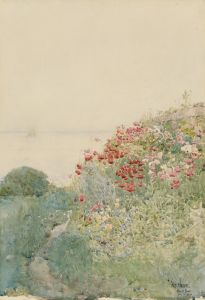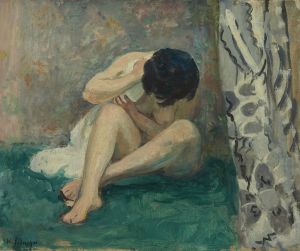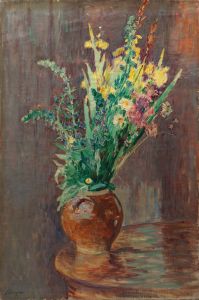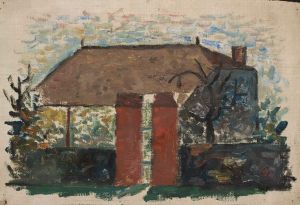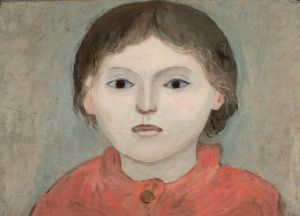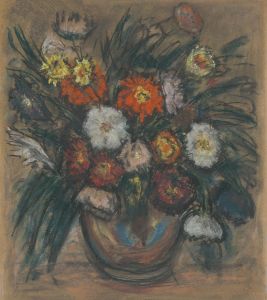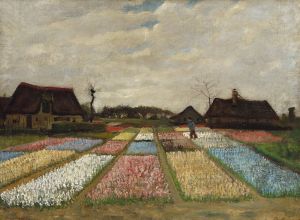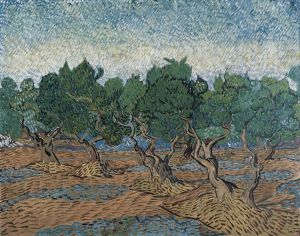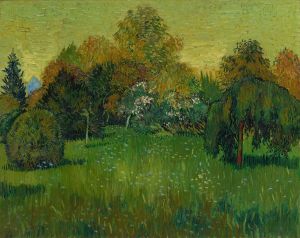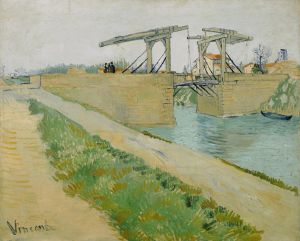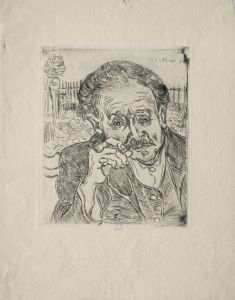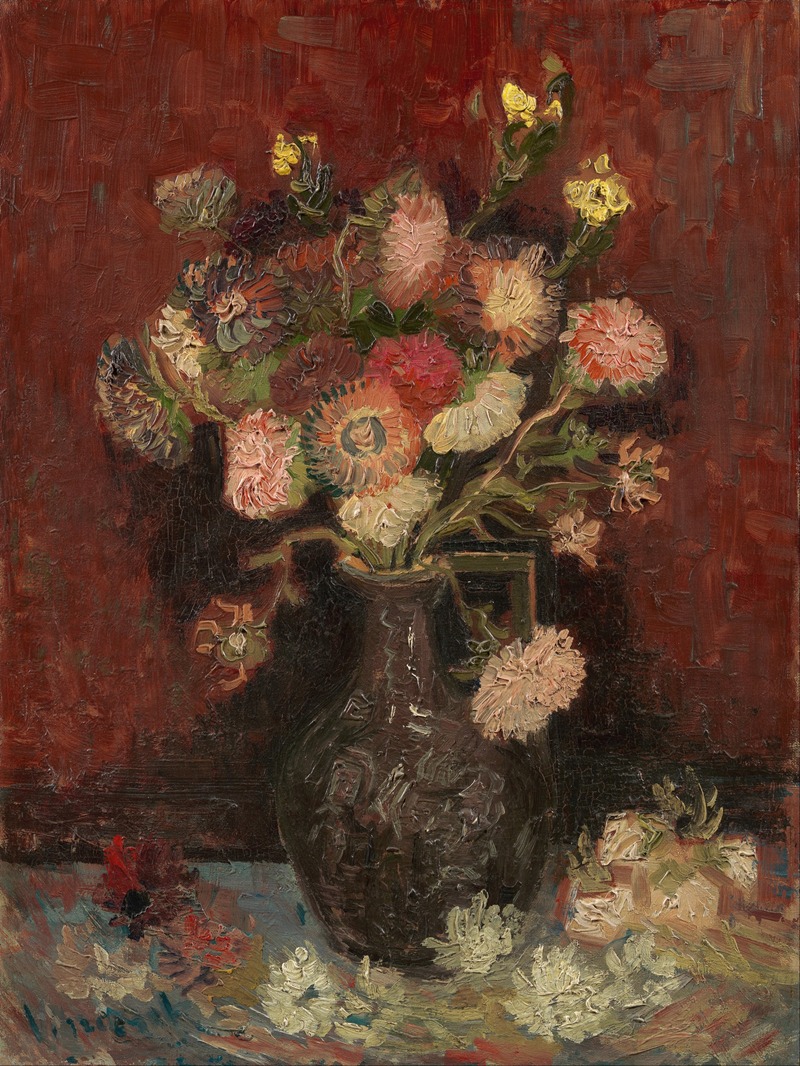
Vase with Chinese asters and gladioli
A hand-painted replica of Vincent van Gogh’s masterpiece Vase with Chinese asters and gladioli, meticulously crafted by professional artists to capture the true essence of the original. Each piece is created with museum-quality canvas and rare mineral pigments, carefully painted by experienced artists with delicate brushstrokes and rich, layered colors to perfectly recreate the texture of the original artwork. Unlike machine-printed reproductions, this hand-painted version brings the painting to life, infused with the artist’s emotions and skill in every stroke. Whether for personal collection or home decoration, it instantly elevates the artistic atmosphere of any space.
"Vase with Chinese Asters and Gladioli" is an oil painting created by the renowned Dutch artist Vincent van Gogh in 1886. This artwork is part of a series of still life paintings that Van Gogh produced during his time in Paris, where he lived from 1886 to 1888. The painting is notable for its vibrant colors and dynamic composition, which reflect Van Gogh's evolving style during this period.
In "Vase with Chinese Asters and Gladioli," Van Gogh depicts a bouquet of flowers arranged in a simple vase. The flowers include Chinese asters and gladioli, which are rendered in bold, expressive brushstrokes. The choice of flowers and the vivid palette demonstrate Van Gogh's interest in exploring color theory and his desire to capture the beauty of nature. The painting's background is relatively plain, which serves to highlight the colorful arrangement of the flowers.
During his time in Paris, Van Gogh was exposed to the works of the Impressionists and other contemporary artists, which significantly influenced his approach to color and composition. He began to experiment with brighter colors and looser brushwork, moving away from the darker tones that characterized his earlier works. This period marked a crucial turning point in Van Gogh's artistic development, as he sought to incorporate the techniques and ideas he encountered in Paris into his own unique style.
"Vase with Chinese Asters and Gladioli" exemplifies Van Gogh's transition from the somber hues of his early Dutch paintings to the vibrant and expressive use of color that would define his later masterpieces. The painting reflects his fascination with the expressive potential of color and his commitment to capturing the essence of his subjects.
Van Gogh's still life paintings from this period often feature flowers, which he used as a means to experiment with color contrasts and compositional arrangements. Flowers provided Van Gogh with an opportunity to explore the interplay of light and color, as well as to convey emotion through his choice of hues and brushstrokes. In this painting, the juxtaposition of the delicate asters and the bold gladioli creates a dynamic visual tension that is characteristic of Van Gogh's work.
The painting is part of the collection at the Van Gogh Museum in Amsterdam, which houses the largest collection of Van Gogh's works. The museum provides insight into the artist's life and creative process, offering visitors a comprehensive view of his artistic journey.
"Vase with Chinese Asters and Gladioli" is a testament to Van Gogh's enduring fascination with the natural world and his relentless pursuit of artistic innovation. Through his use of color and form, Van Gogh sought to express the beauty and vitality of the world around him, leaving a lasting impact on the art world and inspiring generations of artists to come.





